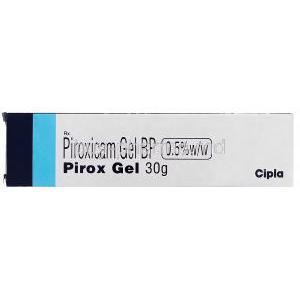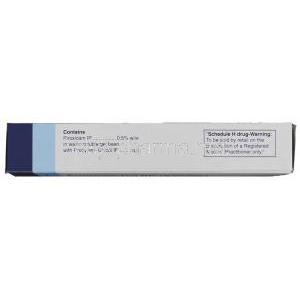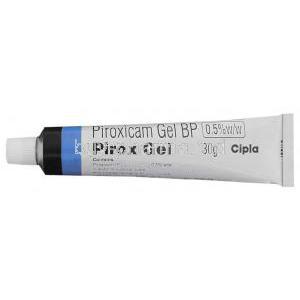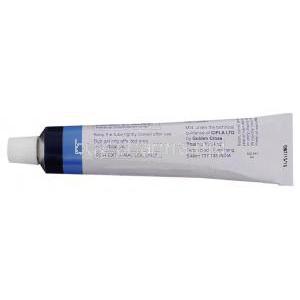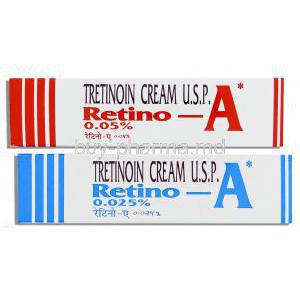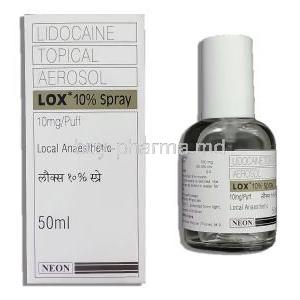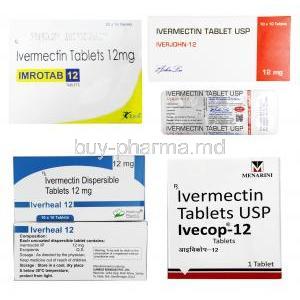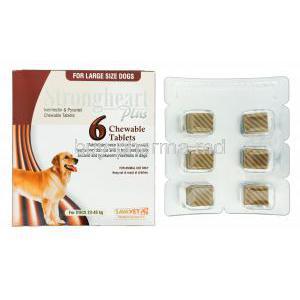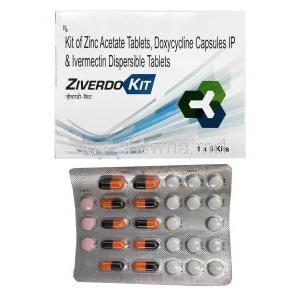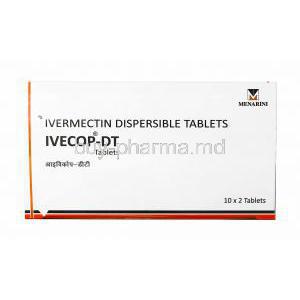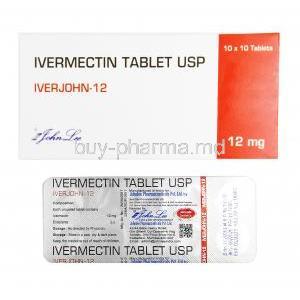1. Introduction
Pirox (Piroxicam Gel) is a topical nonsteroidal anti-inflammatory drug (NSAID) designed to relieve pain, inflammation, and swelling associated with musculoskeletal and joint conditions. As a topical formulation, it provides a targeted approach, minimizing systemic exposure and gastrointestinal side effects common with oral NSAIDs.
Piroxicam, the active constituent, is a potent oxicam derivative known for its prolonged anti-inflammatory action. By acting locally at the site of pain, Pirox Gel ensures rapid relief from discomfort while preserving overall safety.
- Reduces pain and inflammation efficiently.
- Minimizes systemic absorption and related side effects.
- Provides convenient, non-invasive pain management.
Its topical nature makes it an excellent choice for individuals requiring frequent pain relief without oral medication complications.
2. Composition and Formulation
The primary active ingredient in Pirox Gel is Piroxicam, typically present in a concentration of 0.5% to 1% w/w, depending on the brand and formulation. The base is composed of inert excipients such as carbomer, propylene glycol, ethanol, and purified water that facilitate quick absorption and non-greasy application.
The gel form allows the medication to penetrate through the epidermal layer and reach underlying tissues, offering localized therapeutic action.
- Active ingredient: Piroxicam
- Form: Transparent, fast-absorbing gel
- Packaging: Available in tubes ranging from 10g to 50g
- Supportive excipients: Improve consistency, stability, and transdermal delivery
3. Mechanism of Action
Pirox Gel functions by inhibiting the cyclooxygenase (COX-1 and COX-2) enzymes, which are responsible for converting arachidonic acid into prostaglandins—chemical mediators that cause pain, fever, and inflammation. By suppressing these pathways, Piroxicam effectively reduces the production of inflammatory substances in the affected tissue.
This targeted inhibition provides:
- Anti-inflammatory effect: Diminishes swelling and redness at the site of injury.
- Analgesic effect: Relieves both acute and chronic pain.
- Antipyretic action: Reduces local heat and tenderness.
The onset of relief usually occurs within 30 minutes to one hour, depending on the severity of inflammation, with effects lasting several hours.
4. Therapeutic Uses
Pirox Gel is used for the management of a wide range of musculoskeletal and joint-related disorders. Its efficacy in reducing pain and inflammation makes it a preferred topical agent among healthcare professionals.
- Osteoarthritis and Rheumatoid Arthritis: Relieves chronic joint stiffness and inflammation.
- Ankylosing Spondylitis: Reduces spinal pain and stiffness associated with inflammation.
- Sports Injuries and Sprains: Alleviates pain, swelling, and stiffness following trauma.
- Postoperative and Post-injury Recovery: Aids in the management of localized pain and swelling during healing.
5. Off-Label and Adjunctive Uses
In addition to approved indications, Pirox Gel may be used off-label for several localized pain conditions when clinically justified.
- Temporomandibular Joint (TMJ) Pain: Provides localized relief for jaw inflammation.
- Tendinitis and Bursitis: Used as an adjunct therapy to reduce inflammation and improve mobility.
- Chronic Joint Pain: Offers consistent symptomatic relief when combined with physiotherapy.
- Comparative Efficacy: Studies suggest comparable results with other topical NSAIDs such as diclofenac and ketoprofen gels.
These off-label applications highlight the versatility of Piroxicam as a transdermal anti-inflammatory agent.
6. Dosage and Administration
The dosage of Pirox Gel varies according to the affected area and the severity of symptoms. Typically, a small quantity (about 2–4 grams) is gently applied to the affected area two to four times daily.
Step-by-step Application Guide:
- Clean and dry the affected area before application.
- Apply a thin, even layer of the gel.
- Massage gently until fully absorbed.
- Wash hands thoroughly after each use.
The treatment duration is generally short-term but may extend under medical supervision for chronic conditions. Occlusive dressings should be avoided unless directed by a physician.
7. Important Precautions
Proper use of Pirox Gel ensures both effectiveness and safety. Patients should observe the following precautions to minimize local and systemic adverse effects:
- Avoid applying the gel on broken, infected, or eczematous skin.
- Prevent contact with eyes, mouth, or mucous membranes.
- Wash hands before and after each use to prevent unintentional transfer.
- Limit exposure to direct sunlight to reduce the risk of photosensitivity.
- Discontinue use if severe irritation, rash, or itching develops.
Long-term or excessive application may lead to systemic absorption, increasing the risk of side effects similar to oral NSAIDs.
8. Contraindications
Pirox Gel should not be used in certain individuals due to the potential for adverse or allergic reactions. Contraindicated cases include:
- Known hypersensitivity to Piroxicam, other oxicam derivatives, or NSAIDs.
- History of aspirin-induced asthma, rhinitis, or urticaria.
- Presence of skin infection, open wounds, or dermatitis at the application site.
- Patients with severe hepatic or renal impairment.
Careful screening for allergy history and comorbid conditions is essential before initiating therapy.
9. Warnings and Safety Information
While Pirox Gel is generally well-tolerated, specific precautions should be followed to prevent complications.
- Avoid prolonged, continuous application beyond the prescribed duration.
- Use cautiously in individuals with peptic ulcer disease or gastrointestinal bleeding history.
- Systemic absorption may occur with excessive application, leading to NSAID-related complications.
- Patients with cardiovascular conditions should use it under medical supervision.
- Do not combine with other topical NSAID preparations on the same skin area.
Following these safety measures ensures optimal therapeutic benefit and minimizes adverse effects.
```html ```html
10. Careful Administration
Pirox Gel should be administered with vigilance in individuals predisposed to complications or systemic reactions. The following patient groups warrant careful observation and dosage discretion to ensure safety and therapeutic effectiveness.
- Hepatic or Renal Impairment: Patients with mild to moderate liver or kidney dysfunction may exhibit delayed drug clearance. Prolonged use can increase the risk of systemic absorption, necessitating medical supervision and periodic evaluation of organ function.
- Asthma and Respiratory Disorders: Individuals with asthma or chronic obstructive pulmonary disease (COPD) may experience hypersensitivity reactions to NSAIDs. Use should be cautious, and any respiratory distress should prompt discontinuation.
- Elderly Patients: Reduced metabolic clearance and concurrent illnesses heighten the risk of adverse events. Regular monitoring of skin tolerance and possible drug accumulation is advisable.
- Concurrent Medication Use: Caution is essential in patients already taking oral NSAIDs, corticosteroids, or anticoagulants due to the potential for additive gastrointestinal or bleeding complications.
In all these populations, treatment duration should be minimized to the shortest possible period consistent with clinical benefit.
11. Administration in Special Populations
11.1 Use in Elderly Patients
Geriatric individuals exhibit altered skin physiology, slower metabolism, and increased sensitivity to drug effects. Hence, topical Pirox Gel should be used sparingly, applying thin layers only to affected areas.
- Monitor for skin irritation, bruising, or dryness during prolonged use.
- Adjust application frequency according to individual tolerance and response.
- Polypharmacy in elderly patients raises the possibility of pharmacodynamic and pharmacokinetic interactions. Cross-checking concurrent medications is imperative to avoid synergistic toxicity.
Close clinical supervision ensures therapeutic benefit while mitigating cutaneous and systemic complications.
11.2 Use in Pregnant and Nursing Women
Although topical administration minimizes systemic absorption, Piroxicam, like other NSAIDs, has the potential to influence prostaglandin synthesis—crucial for fetal circulation and uterine function. Animal studies indicate potential teratogenic risks at high systemic doses.
- Pregnancy: Avoid application during the third trimester, as prostaglandin inhibition may lead to premature closure of the fetal ductus arteriosus and delayed labor.
- Lactation: The excretion of Piroxicam in breast milk is minimal when used topically; however, direct contact between the infant and treated skin should be avoided.
- General Guidance: Use only when the anticipated therapeutic advantage outweighs potential fetal or neonatal risks.
11.3 Use in Children
Pediatric use of Pirox Gel is generally limited due to insufficient clinical data on safety and efficacy. The thinner epidermal barrier in children increases percutaneous absorption, which can lead to unintended systemic exposure.
- Recommended for use only in children above 12 years of age unless directed by a veterinarian or physician.
- Apply minimal quantities and avoid large surface areas to prevent toxicity.
- Monitor for early signs of allergic reactions, skin irritation, or rash formation.
Supervised use under medical direction ensures safety in younger populations.
12. Drug Interactions
Pirox Gel may interact with certain medications when absorbed systemically, particularly during prolonged use or over extensive skin areas. Awareness of potential interactions helps reduce adverse outcomes.
- Systemic NSAIDs: Combined use may intensify gastrointestinal irritation or ulceration risk.
- Anticoagulants and Antiplatelet Agents: Enhanced bleeding risk due to synergistic inhibition of platelet aggregation.
- Corticosteroids: Concurrent use increases susceptibility to skin thinning and local irritation.
- Methotrexate and Lithium: Potential elevation in plasma concentrations due to NSAID-mediated clearance reduction.
- Alcohol: Excessive consumption amplifies gastrointestinal adverse effects, even with topical use.
Spacing applications and monitoring clinical response help minimize pharmacological conflicts.
13. Possible Side Effects
Though Pirox Gel is primarily localized in action, side effects may occur in susceptible individuals. These may manifest as dermatologic, allergic, or systemic responses.
- Local reactions: Redness, itching, burning, rash, or mild irritation at the site of application.
- Photosensitivity: Increased skin sensitivity to ultraviolet light, occasionally leading to pigmentation or rash.
- Contact Dermatitis: Inflammatory skin reaction due to hypersensitivity to excipients or the active drug.
- Systemic Effects: Rarely, excessive use may lead to headache, dizziness, or gastrointestinal discomfort.
- Hypersensitivity Reactions: Angioedema or anaphylactoid symptoms in individuals allergic to NSAIDs.
Immediate discontinuation is recommended if severe irritation or allergic manifestations occur.
14. Common Side Effects
The most frequent reactions associated with Pirox Gel are mild and transient. These typically resolve without the need for medical intervention.
- Mild erythema and itching at the application site.
- Temporary burning or warmth sensation post-application.
- Peeling, dryness, or tingling with repeated use.
- Localized sensitivity to sunlight.
To minimize discomfort, apply a thin layer and avoid excessive rubbing of the skin.
15. Overdosage and Management
Topical overuse of Pirox Gel is rare but possible, especially when applied over large areas or under occlusive conditions. Accidental ingestion requires immediate medical attention.
- Signs of Overdose: Nausea, vomiting, abdominal pain, dizziness, or drowsiness.
- Systemic Toxicity: Excessive absorption may mimic oral NSAID toxicity, potentially affecting renal or gastrointestinal systems.
- Management: Remove residual gel by washing the affected area. In cases of ingestion, initiate supportive therapy, including gastric lavage and hydration.
- Emergency Guidance: Seek immediate medical help or contact a poison control center in the event of accidental ingestion.
16. Handling and Storage
Proper storage and handling of Pirox Gel preserve its stability and therapeutic efficacy. Exposure to extreme conditions can degrade its active components and reduce potency.
- Storage Temperature: Maintain below 30°C (86°F) and keep away from direct sunlight and moisture.
- Packaging Care: Always replace the cap tightly after use to prevent contamination and evaporation.
- Shelf Life: Observe the expiry date indicated on the packaging; expired gel should not be used.
- Handling Precautions: Avoid touching the nozzle directly to the skin to prevent microbial contamination.
- Disposal: Discard expired or empty tubes responsibly, following local pharmaceutical waste disposal regulations.
Maintaining proper hygiene and storage ensures consistent performance of the medication throughout its usage period.
```


